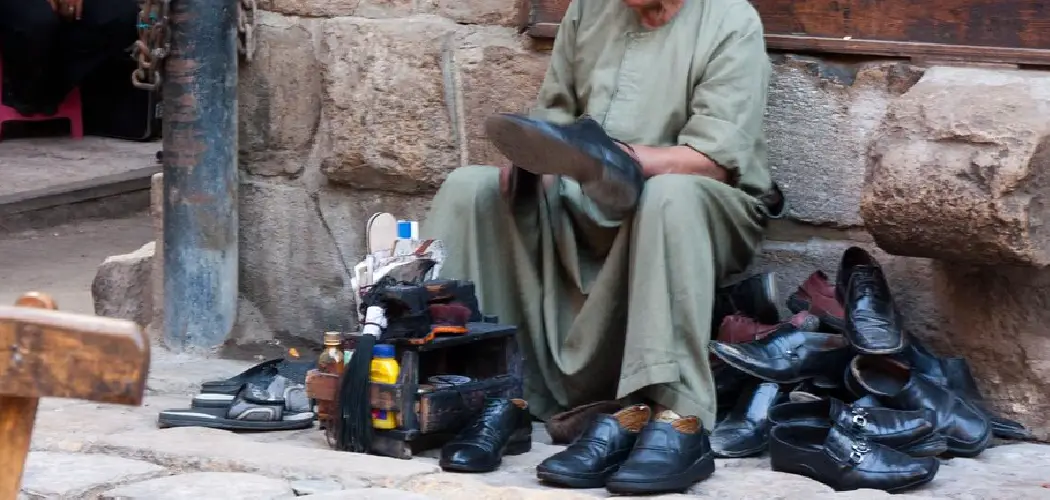Shopping for shoes at thrift stores is an excellent way to find unique styles at affordable prices. These second-hand treasures allow for environmentally friendly fashion choices while exploring many options not typically available in regular retail stores. However, buying thrift store shoes means that they have been worn before, emphasizing the importance of cleaning them thoroughly before use.
Not only does cleaning ensure the shoes are hygienic and free from harmful bacteria, but it also removes any lingering odors and revives the shoes to their best possible condition. This article will provide practical steps on how to clean shoes from the thrift store effectively. By following these methods, you can ensure that the shoes look as good as new and last for a long time, providing comfort and style. Enjoy transforming a thrift store find into a prized addition to your wardrobe.
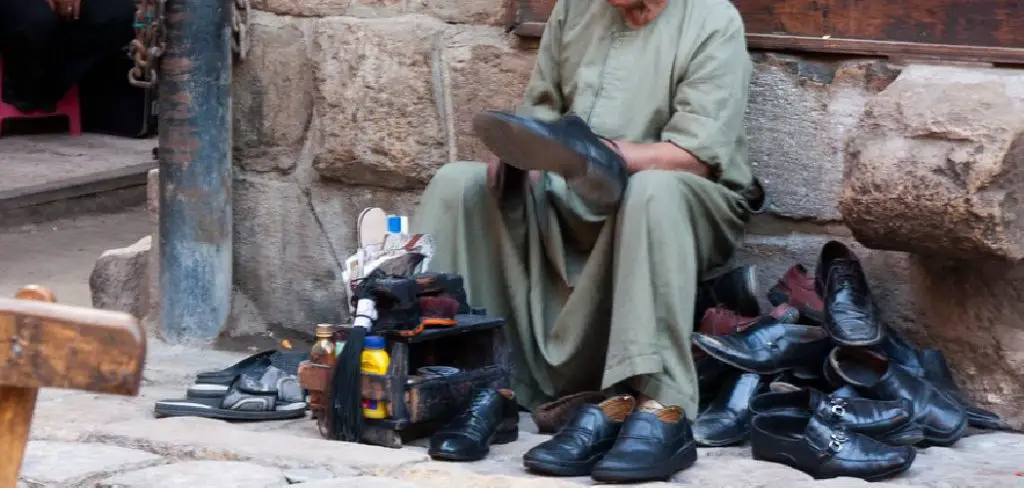
Assessing the Shoes
Identifying the Material
When it comes to cleaning thrift store shoes, the first crucial step is identifying the material. Shoes can be made from various materials such as leather, suede, fabric, or rubber, and each material requires a distinct cleaning method to ensure proper care. Start by carefully examining the exterior and interior of the shoes for any texture or fabric that stands out.
Leather shoes often have a smooth, sometimes slightly glossy surface, while suede has a soft, brushed texture. Fabric shoes can range from cotton to canvas, and rubber shoes typically have a more durable, flexible feel. To aid in accurate identification, look for care labels or manufacturer instructions often found on the inside of the shoe or the tag. These labels can provide valuable information about the material type and suggest any specific cleaning guidelines, ensuring the shoes are treated with the utmost care.
Inspecting for Damage
Once you’ve identified the material of your thrift store, the next step is to thoroughly inspect the shoes for any signs of damage. Carefully examine areas that are prone to wear and tear, such as the soles, seams, and heels. Check for worn-out soles, loose or fraying seams, and mold or mildew spots, especially if the shoes have been stored in damp conditions.
Addressing minor issues before cleaning can prevent further damage and prolong the life of the shoes. Consider setting them aside for professional repair or restoration for shoes that appear too damaged. Consulting a cobbler can provide insights into whether the shoes can be returned to their former glory or if they are beyond repair. This strategic approach will save time and effort, focusing only on shoes that are worth the investment in cleaning and restoration.
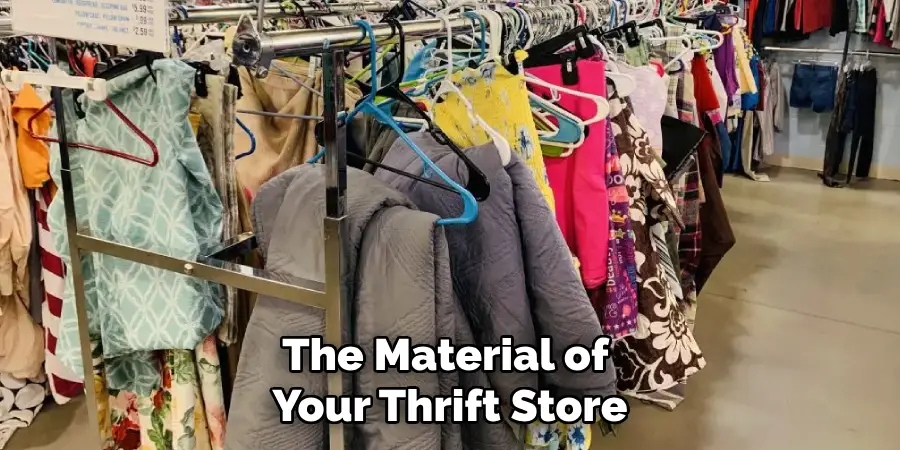
Basic Cleaning Supplies and Tools
Essential Supplies
To begin the process of cleaning thrift store shoes effectively, gather a range of basic cleaning supplies that are versatile enough to handle different materials. Essential items include mild detergent for a gentle yet effective clean, baking soda for odor absorption, and white vinegar for tackling tougher stains and disinfecting. For scrubbing and brushing, have a soft-bristled brush and a toothbrush at hand—these are perfect for reaching into small crevices and delicate materials.
Soft cloths will also be necessary for wiping and drying shoes without causing damage. When dealing with specific materials, such as leather or suede, additional specialized tools can greatly enhance the cleaning process. Leather conditioner should be used to maintain moisture and appearance in leather shoes, while a suede eraser is ideal for spot-cleaning suede, restoring its texture without the need for harsh chemicals.
Additional Items
In addition to essential supplies, consider investing in optional cleaning products that cater to more challenging cases. Comprehensive shoe cleaning kits often come with an assortment of brushes and cleaners designed for different types of footwear, making them highly convenient for a thorough cleaning. Specialized cleaners can be invaluable for stubborn stains, designed specifically for the material in question.
Another recommendation is to utilize items like microfiber towels for a lint-free finish and shoe trees to help maintain confidence and efficiently handle your thrift store’s shape during cleaning. Having a dedicated cleaning area or mat is also advantageous, as it helps contain any mess and protects surfaces. This area should have proper ventilation to ensure any odors or cleaning fumes dissipate quickly.
By organizing these tools and setting up a well-prepared cleaning space, you can handle your thrift store finds with confidence and efficiency, ensuring they are revitalized and ready to wear.

How to Clean Shoes from The Thrift Store: Cleaning Fabric and Canvas Shoes
Pre-Treatment
Before diving into the cleaning process for fabric and canvas shoes, performing a few preparatory steps is crucial to ensure optimal results. Start by removing the laces and insoles, if applicable. Shoelaces can be cleaned separately, either by hand-washing with a mild detergent or by placing them in a small laundry bag to be washed in a machine. Insoles, on the other hand, may require gentle scrubbing with a damp cloth and mild cleaner, but ensure they are completely dry before reinserting them back into the shoes.
Once the laces and insoles are set aside, use a soft brush or cloth to gently brush off any loose dirt and debris from the shoe’s surface, paying special attention to areas like seams and grooves where grime often accumulates. This pre-treatment step not only preserves the integrity of the shoe’s fabric during washing but also enhances the effectiveness of the cleaning process.
Washing Process
With the pre-treatment complete, you’re ready to wash your fabric or canvas shoes. Begin by preparing a cleaning solution with a mixture of warm water and mild detergent in a container. Dip a soft toothbrush into the solution and gently scrub the fabric surfaces, using circular motions to lift stains and grime effectively without damaging the material. Ensure you cover the entire shoe, including seams and other detailed areas.
Once thoroughly scrubbing the shoes, use clean water to rinse off the detergent. It may be helpful to use a damp cloth to help remove any suds or excess soap. When drying the shoes, it’s vital to avoid direct sunlight or heat sources, as these can lead to warping or shrinking of the fabric. Instead, air-dry the shoes in a well-ventilated area, possibly stuffed with newspaper to help maintain their shape and accelerate the drying process.
Your thrift store finds will regain their original charm and freshness through careful washing and drying techniques.

How to Clean Shoes from The Thrift Store: Cleaning Leather and Faux Leather Shoes
Pre-Treatment
Caring for leather and faux leather shoes begins with a thorough yet gentle pre-treatment process. Start by using a damp cloth to wipe off any loose dirt and dust from the surface of the shoes, carefully reaching into seams and grooves to ensure no debris is left behind. If your shoes have laces, remove them for a more comprehensive clean, and consider removing any removable insoles if applicable.
This facilitates a better cleaning process and allows you to clean these components separately. Once the basic cleaning is done, inspect the shoes for any specific stains or scuffs that require attention. For leather shoes, utilize a leather-specific stain remover or cleaner to address stubborn marks, while faux leather can often be treated with vinegar and water solution.
Apply the product using a soft cloth, working softly with circular motions, and always following the manufacturer’s guidelines or recommendations to prevent damage. This meticulous approach lays a strong foundation for the subsequent cleaning and conditioning phases.
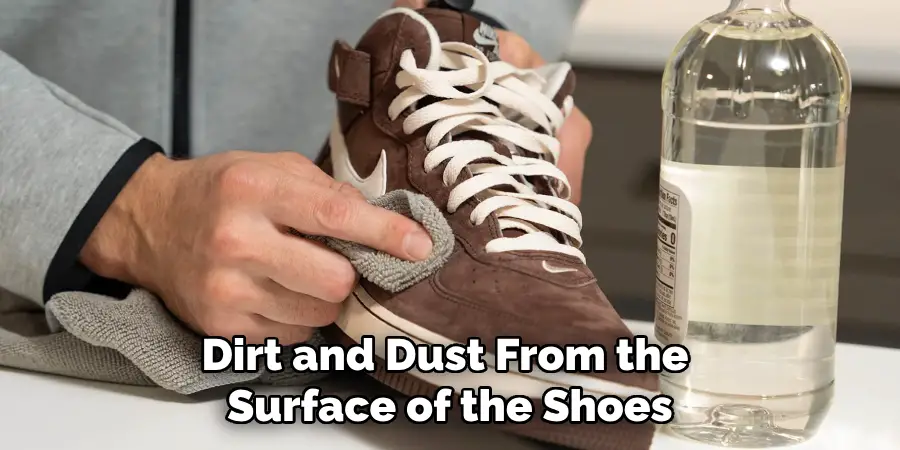
Cleaning and Conditioning
The next steps involve cleaning and conditioning your leather shoes to maintain their durability and shine. Mix mild soap or specialized leather cleaner with warm water to prepare a cleaning solution. Using a soft cloth, gently work this solution into the leather in small, circular motions, ensuring you cover every part of the shoe without saturating it with excess moisture. After the shoes appear clean, wipe off any soap residue with a slightly damp cloth.
It’s crucial to allow the shoes to air dry naturally, away from direct sunlight or artificial heat, to avoid any warping or cracking. Once the shoes are dry, apply a quality leather conditioner, which helps to restore moisture and suppleness to the leather. Rub the conditioner gently with a clean cloth, making sure it is evenly applied and absorbed. This process revitalizes the appearance of your leather shoes and prolongs their life by preventing drying out and cracking. Remember to avoid over-conditioning, as this can lead to a greasy finish, and always test new products on a small, inconspicuous area first.
Cleaning Suede Shoes
Pre-Treatment
Begin with a suede brush, an essential tool in gently removing loose dirt and restoring the nap—the delicate, velvety texture—of suede shoes. Brush the suede with light strokes, following the grain to lift dirt and revitalize the fabric without causing damage. Incorporate a suede eraser to tackle specific stains or spots; these erasers are excellent for targeting blemishes without harsh chemicals.
Simply rub the eraser over the stained areas, applying gentle pressure to lift marks while taking care not to over-scrub, which could harm the texture. This initial pre-treatment is pivotal in maintaining the shoe’s pristine look while setting the stage for more thorough cleaning methods. By investing time in these careful techniques, you preserve the quality and appearance of suede shoes, minimizing the need for frequent deep cleaning.
Deep Cleaning and Maintenance
Employing a suede cleaner or a mixture of equal parts white vinegar and water can be highly effective for tougher stains on suede shoes. Test any cleaning agents on a small, inconspicuous area first. Apply the cleaner gently with a soft cloth, using small, consistent strokes to address the stain, and then allow the area to dry completely. Once dry, brush the surface again with a suede brush to restore the nap.
Preventing suede is just as crucial as cleanup; regularly use water and stain-repellent spray. This protective layer helps resist future stains and water damage, maintaining both beauty and durability. Make repellent applications routine, especially before wearing suede shoes in inclement weather, and store them properly with a shoe tree to help retain their shape. These combined efforts ensure suede shoes remain in excellent condition and ready for any occasion.
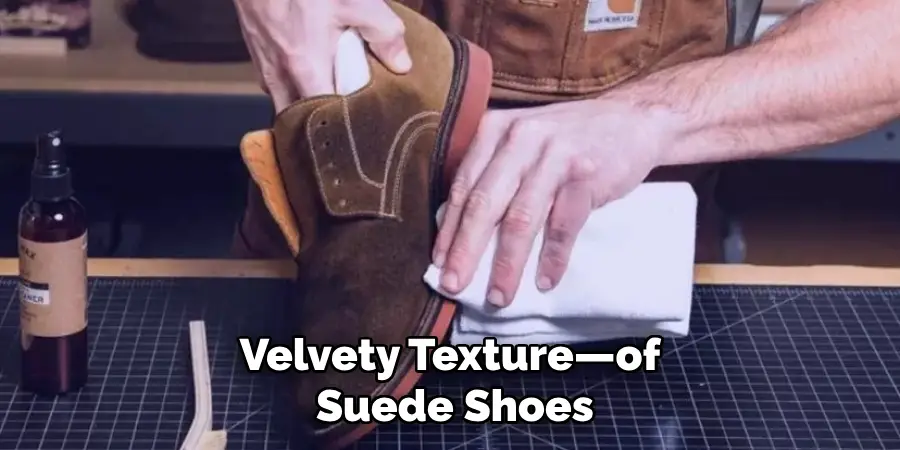
Removing Odors from Thrift Store Shoes
Using Baking Soda and Vinegar
A common yet effective method to eliminate odors from thrift store shoes is to use baking soda. Simply sprinkle a generous amount inside the shoes and let it sit overnight. By morning, the baking soda will have absorbed many of the unpleasant smells. To further freshen up the interior, create a solution of equal parts white vinegar and water.
Lightly scrub the inside of the shoes with a soft cloth dipped in this mixture, then allow them to air dry completely. Ensure they’re placed in a well-ventilated location to speed up the drying process and prevent any moisture-induced odors.
Alternative Odor Removal Methods
Consider using activated charcoal, which is excellent at absorbing odors naturally for persistent odors. Another option is commercial shoe deodorizers specifically designed to remove shoe odors. Additionally, storing your shoes in a well-ventilated area whenever they are not in use will prevent the buildup of future odors, keeping your thrift store fresh and ready for wear.
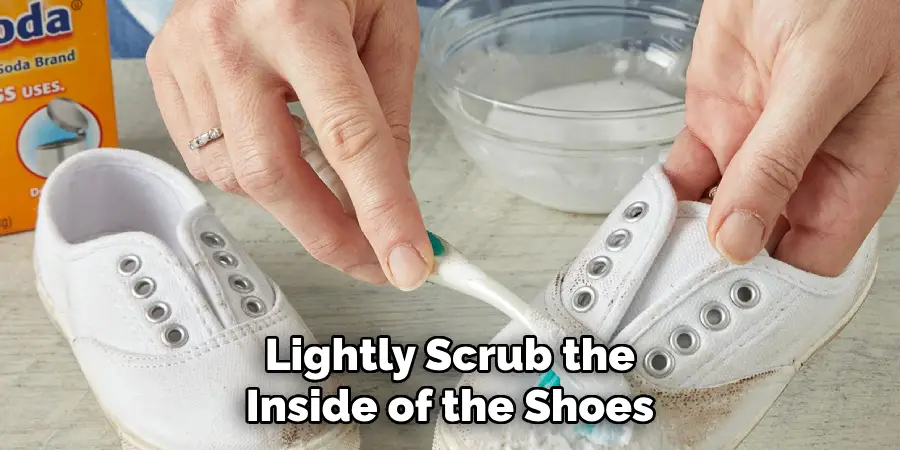
Final Touches and Care
Inspecting and Replacing Parts
After cleaning, inspect your shoes for any areas requiring further attention. Check for worn-out insoles or laces; replacing these can significantly enhance comfort and appearance. It’s advisable to condition leather or faux leather shoes periodically. Regular conditioning preserves their sheen and suppleness, safeguarding against cracks and wear. Always follow product instructions for best results and apply conditioners sparingly to avoid a greasy finish.
Storage Tips
Once cleaned, storing shoes in a cool, dry place is crucial to maintain their condition. Utilize shoe trees or inserts to preserve their shape, preventing creasing or warping. Additionally, store shoes in dust bags or boxes to shield them from dust and damage. This protective measure prolongs their lifespan, ensuring they remain a valuable and stylish wardrobe element. Proper care keeps your shoes looking fresh and ready for any occasion.
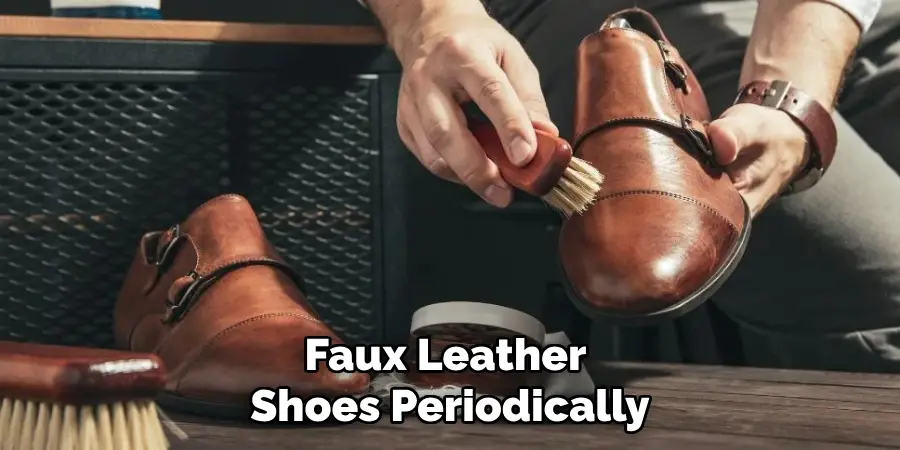
Conclusion
Cleaning thrift store shoes can be rewarding, transforming pre-owned footwear into gleaming, near-new additions to your wardrobe. Begin by assessing the shoe materials to select the right cleaning supplies and techniques, as outlined in sections on leather and suede care. Key steps include brushing away surface dirt, gently scrubbing with appropriate solutions, and applying protective treatments like conditioners or water repellents. Additionally, managing odors with baking soda or specialized deodorizers ensures freshness.
To maintain shoes, consistently inspect for worn parts and use storage methods that prevent damage. Remember, revitalizing your thrift store finds is part of the joy of second-hand shopping, breathing new life into each pair and making them feel like new. By following these guidelines on how to clean shoes from the thrift store, you ensure your footwear remains in excellent condition, combining sustainability with style in your collection.

